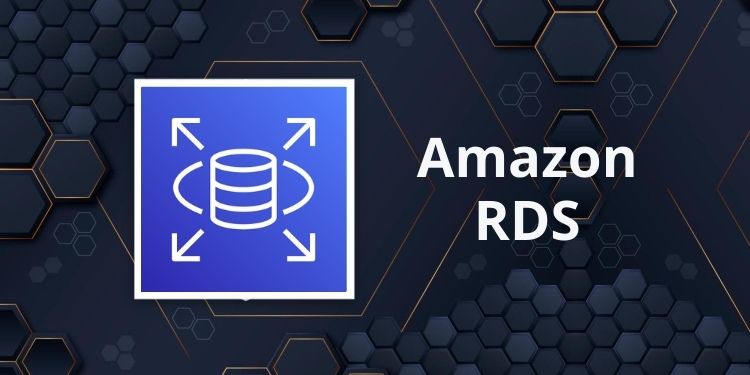Amazon Relational Database Service (RDS)
 Ashwin
Ashwin
In the vast landscape of cloud computing, managing databases efficiently and securely is a critical aspect for businesses of all sizes. Amazon Web Services (AWS) offers a robust solution through its Relational Database Service (RDS), providing a managed database service that simplifies administration tasks, automates backups, and enhances scalability. In this comprehensive guide, we'll delve into the world of Amazon RDS to understand its features, benefits, and use cases.
Understanding Amazon RDS
Amazon RDS is a fully managed relational database service that supports multiple database engines, including MySQL, PostgreSQL, Oracle, SQL Server, and MariaDB. By leveraging AWS infrastructure, RDS handles routine database tasks such as provisioning, patching, backup, recovery, and scaling, allowing users to focus on their applications without worrying about the underlying database management.
Key Features and Benefits
1. Ease of Setup and Management
RDS simplifies the process of setting up, operating, and scaling a relational database in the cloud. With a few clicks or through APIs, users can launch a database instance, configure parameters, and start working immediately.
2. Multiple Database Engine Support
It offers support for various popular database engines, enabling users to choose the engine that best fits their application requirements without worrying about managing the underlying infrastructure.
3. Automated Backups and High Availability
RDS automatically performs regular backups and allows users to restore databases to any specific point in time within the retention period. Additionally, it offers options for high availability using Multi-AZ deployments, ensuring minimal downtime.
4. Scalability and Performance
Users can easily scale compute and storage resources to accommodate increasing workloads or changing performance needs. Amazon RDS allows for vertical scaling (increasing instance sizes) and horizontal scaling (read replicas) to optimize performance.
5. Security and Compliance
AWS implements robust security measures within RDS, including encryption at rest and in transit, network isolation using Amazon VPC, IAM-based authentication, and support for compliance standards like HIPAA, GDPR, and PCI DSS.
Use Cases
1. Web Applications
For businesses running web applications that require a reliable, scalable, and easy-to-manage database backend, Amazon RDS offers an ideal solution.
2. E-commerce Platforms
E-commerce sites handling large volumes of transactions can benefit from RDS's scalability, high availability, and security features to ensure uninterrupted service.
3. Analytics and Reporting
Companies dealing with data analysis and reporting can leverage RDS for its ability to handle complex queries and scale resources based on fluctuating data processing needs.
4. Development and Testing Environments
RDS provides a cost-effective solution for creating development and testing environments, allowing teams to spin up database instances quickly and manage them efficiently.
Terminologies Used in RDS
Amazon RDS encompasses several key terms integral to its functionality:
DB Instance: A database environment within RDS, comprising the computing resources necessary to run a database using a chosen database engine.
DB Engine: Refers to the specific database software utilized within an RDS instance, such as MySQL, PostgreSQL, Oracle, SQL Server, etc.
DB Parameter Group: Contains configuration parameters that can be applied to one or more DB instances.
DB Option Group: Bundles specific features or options that can be applied to an RDS instance.
DB Security Group: Acts as a virtual firewall, controlling inbound and outbound traffic to an RDS instance.
DB Subnet Group: Defines subnets for RDS instances in a VPC (Virtual Private Cloud).
Multi-AZ DB Deployments
Multi-AZ deployments in Amazon RDS involve replicating the database in a different Availability Zone (AZ) for enhanced availability and fault tolerance. In this setup:
Primary Instance: Handles both read and write operations.
Secondary (Standby) Instance: Serves as a backup in a different AZ, replicating data from the primary instance synchronously. It's automatically promoted to primary in case of a failure.
Backup and Restore the DB Instance
Backup:
Amazon RDS offers automated backups, enabling point-in-time recovery within the defined retention period. Users can also manually trigger snapshots for immediate backups. Features include:
Automated Backups: Regular backups that allow restoring to any point in time within a specified window.
Manual Snapshots: User-initiated backups that capture the current state of the database.
Restore:
Restoring a DB instance involves:
- Point-in-Time Restore: Allows restoring databases to any specific point within the backup retention period, aiding in data recovery.
Backup and Restore the DB Cluster
Amazon RDS supports cluster-based databases (e.g., Aurora), offering cluster-level backup and restore functionalities:
Cluster Snapshots: Captures the entire cluster's state at a specific point in time.
Cluster Restore: Enables recreating a cluster from a snapshot, restoring the entire cluster's data and configuration.
Blue/Green Deployments
Blue/Green deployments involve managing the deployment of new application versions or updates:
Blue Environment: Represents the currently active version of the application.
Green Environment: Represents the updated version or new release of the application.
Amazon RDS facilitates Blue/Green deployments by enabling the setup of separate database environments, allowing seamless switching between versions without impacting the production environment.
Amazon RDS simplifies the complexities of managing databases, offering a reliable, scalable, and secure solution for businesses of all sizes. Its managed service model frees up valuable time and resources that can be redirected toward innovation and core business activities. With its flexibility, ease of use, and extensive features, Amazon RDS continues to be a preferred choice for organizations seeking a hassle-free database management solution in the cloud.
Subscribe to my newsletter
Read articles from Ashwin directly inside your inbox. Subscribe to the newsletter, and don't miss out.
Written by

Ashwin
Ashwin
I'm a DevOps magician, conjuring automation spells and banishing manual headaches. With Jenkins, Docker, and Kubernetes in my toolkit, I turn deployment chaos into a comedy show. Let's sprinkle some DevOps magic and watch the sparks fly!